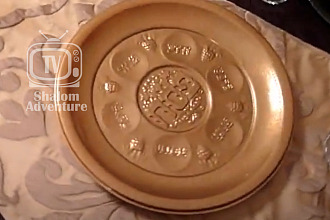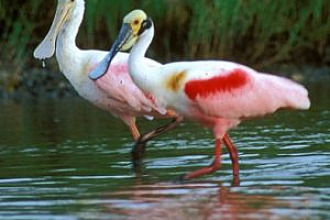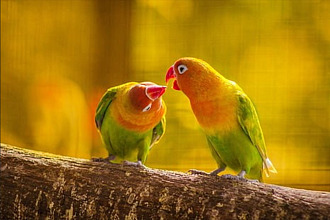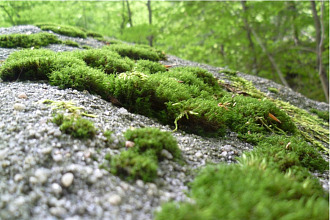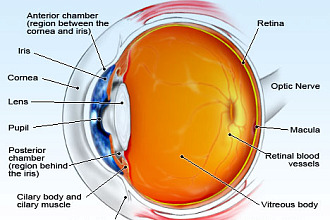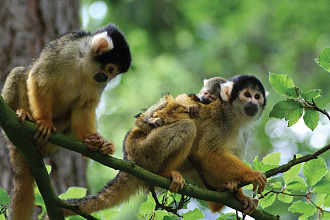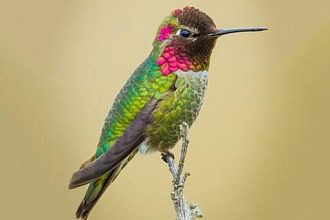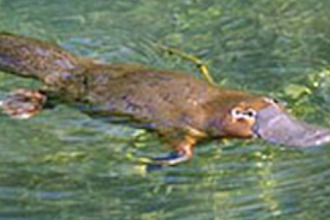The ants' brains are the largest of any insect, and their mushroom-shaped appendages have been found to function similar to the gray matter of human brains. So it's not by accident they are observed successfully changing careers, responding to emergencies, having huge ant-community civic projects, and are able to keep track of paths between food source and home by laying down scent trails which they follow themselves and direct other ants to for nourishment.
There are some 20,000 ant species with colonies having been discovered with literally millions of ants living in Creator-designed not-by-accident, compatible relationships.
Ants plan ahead, building water traps within their mounds to keep the rain out. Only their Designer would be able to supply that not-by-accident "know how" to these skilled little creatures—which often do not measure even half an inch long! The life techniques of their colonies are so successful that "biomimetic" studies of ant locomotion, foraging trails and fault-tolerant storage have assisted the fields of computer science and robotics—having even helped solve certain search engine problems!
In many ants' living quarters you'll find chambers they use as nurseries, chambers for food storage, and other chambers used by the worker ants to rest. (Sounds like the rooms in our homes, doesn't it?) Many engineering feats are accomplished in the building of the tunnels within the mound and/or beneath the ground. Western harvester ants will make a mound on top of the earth and then tunnel straight down 15 feet, if needed, so they can safely hibernate during the winter. Another certainly not-by-accident skill is the way ants will at times burrow tunnels from opposite directions, starting quite a distance apart. Yet their tunnels always meet with precision. How they arrive at that precise point is unknown, but their engineering is more consistently successful than human engineered tunnels!
The worker ants you see scurrying around are females, daughters of the queen ant. They're intelligent, dedicated, sterile little creatures with no wings. Only the males have wings, as does the queen ant. The males and the queen ant mate on the wing. The male has then accomplished his reason for existence and shortly thereafter dies. The queen ant, who stores the sperm, now is able to spend the rest of her life of 15 to 30 years laying a variety of eggs. Her eggs go through the larva, pupa and adult stages. Most become worker ants which live a year or two. There are far fewer fertile ants produced since less queen ants and male ants are needed. How the ratio between the required numbers of worker ants, soldier ants and reproductive ants is maintained is all part of God's not-by-accident design genius.
Incidentally, at first the queen ant gives out a unique scent that tells the nursery-tending ants that additional queen ants are unneeded in the colony. But as she ages, nearing death, her scent is lessened and the nursery tenders busily begin the nurture of possible replacements. The winged youngsters, male and female, are tended with care—then prodded by the workers into the mating flight. At least one queen ant returns to continue the colony. The other queen ants fly elsewhere after that mating flight to search out a location to each begin a new colony for themselves. The queen ant produces and tends her own workers until the first batch of workers are old enough to tend the newly-laid additional worker "staff" and the queen ant returns to her main assignment—of simply laying more eggs. Incidentally, nursery-tending ants maintain strict climate control—a temperature of 77 degrees Fahrenheit—warming or fanning the "babies" as needed! It's one more not-by-accident God-given skill
Career opportunities for the worker ant includes herding and milking (tapping or stroking with their antennas) caterpillars and aphids that provide a nectar-like delicacy ants enjoy. Or they work at cultivation of underground gardens, or assume a role in security as they mature and gain in weight. They provide educational training for young ants, and have lifting tasks—carrying 10 to 20 times their own weight—then work together on even heavier assignments. Ants use their brains to
complete a task.
If inclined to laziness, it is not by accident our Creator tells us to go to the ant, consider her ways, and be wise!
"NOT BY ACCIDENT" (c) Juanita Kretschmar is used by permission and was first published in newsletters about A Key Encounter, a Key West, FL, Creation-based, educational tourist attraction. Go to www.akeyencounter.org for additional information, To receive the free newsletter write: AKE, PO Box 177, Big Pine Key, FL 33043


